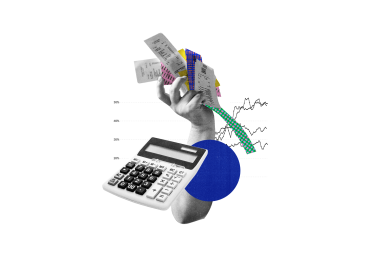Over the past two years, since the new Gambling Law and Technical Regulations have been adopted, the Georgian gambling market has grown. This growth is reflected in the revenues generated as well as by the number of new companies awarded Georgian gambling licenses. Undoubtedly, the pandemic’s abatement has some part to play in revenue numbers. Still, the number of new licenses is entirely due to the now-regulated status of the Georgian gambling market. Growth is good, but growth without innovation leads to stagnation and potential decline. This then begs the question: Does gambling industry regulation stifle innovation?
This question is one that has been long debated. An internet search will yield many results with conflicting opinions. As is usually the case, the answer is not a clear-cut yes or no, but is nuanced, depending on the details such as what type of regulation and which gambling jurisdiction. However, because over my tenure in the industry, I’ve seen lots of innovation occur, and I believe that overall, regulations do not hinder innovation. I will do my best to defend my assertion below.
The Regulation or Regulations that I will focus on in this article are related to technology and operations, and not those related to licensing or other areas of the regulated gambling industry. Those other regulatory areas may have an indirect impact on innovation, such as by making licensing too restrictive or costly for smaller innovative companies, but the direct impact comes from regulations that may, intentionally or inadvertently, restrict technological advances. As Albert Einstein once said, ‘Necessity is the mother of invention’ and innovation is born of the invention.
Whilst not at the forefront of technological innovation, and whilst many will say that the gambling industry, especially the land-based sector, is a laggard in terms of technology adoption, there has been an astounding amount of technological innovation in the industry.
In the land-based sector, slot machine and peripheral device technology underwent significant innovation from the 1980s through the early 2000s. Many innovations were themselves made obsolete by newer innovations, as electronic and computer technologies advanced and were adopted. In those roughly 30 years, slot machines went from being purely mechanical to electro-mechanical and then to fully electronic.
Coin acceptors in slot machines evolved from simply determining coin size to comparing the image on the coins, and even their metallic composition, against a verified sample to detect counterfeits. Coin handling within slot machines went from mechanical ‘feathers’, which were hit by coins like a toggle switch to enable coin counting, and ‘shorting strips’, which actuated devices when metal coins touched them, to electronic sensors.
Note acceptors went from being large, clunky devices and a novelty to small, incredibly intelligent devices that became a necessity. These note acceptors supported a new innovation – bar-coded tickets – that made coin-related innovations obsolete. Ticket-in and Ticket-out (TiTo) systems also spurred innovation in currency counting devices, which evolved to also count bar-coded tickets.
In some gaming jurisdictions, TiTo was either not adopted or was quickly superseded by the introduction of mag-stripe and chip-based player cards. Fuelled by improvements in computer-server and network technologies, these cards, when inserted in a card reader, allowed funds to be downloaded electronically from a player’s account directly to the slot machine and vice versa.
As personal computing power increased and as costs came down, that computing technology was ported into slot machines. Slot machines sported 2 or 3 monitors, with great graphics, incredible audio, and amazing animation. As graphic processing units and monitor resolutions continued to improve, they were also incorporated into slot machines that now boast high-definition, in some cases 4K, monitors.
Innovation was not occurring simply on the slots side. Table games, those unchanging bastions of traditional gambling, saw a host of new technology introduced. Automated card shuffling devices sped up card-based gameplay and ensured thorough and randomized card shuffles. Chip sorters eliminated the need for chip-muckers (person-sorting wagered chips) at roulette tables, speeding up gameplay. And speaking of chips, those used with games such as Blackjack, Craps, Baccarat, etc., became bar-coded or enabled with Radio Frequency Identification (RFID) technology so that wagers and pay-outs were now monitored by systems for accuracy.
In the online gambling sector, technology and innovation were, and continue to be, the foundations that have enabled its proliferation. Online gambling is itself an innovation, and the recent pace of iterative innovation is seemingly ever more feverish. As internet and computing technology capabilities increased and operational costs decreased, the online gambling sector innovated voraciously. The areas of Cloud Computing, Payment Processing, use of Artificial Intelligence, and in some jurisdictions, the use of Cryptocurrencies are but a few examples of innovation in this sector.
The fact that this technological innovation has occurred supports the conclusion that gambling regulations do not stifle innovation. However, as I said, it’s not that clear-cut. In many cases, Regulatory Authorities are faced with a significant dilemma. Technology is advancing at such a rapid pace that regulations cannot keep up. In many cases, the Regulatory Authorities themselves are either not technologically savvy enough or don’t have the staff necessary to deal with the barrage of innovative ideas. This results in delays in the adoption of new technology or innovation since the Regulators have to understand it, to determine if it fits within their current legal and regulatory scheme, or if legal and regulatory changes are needed, and to determine if it negatively impacts their mandate to keep gambling fair, crime-free and protective of the susceptible.
Therefore, it is imperative to help Regulatory Authorities understand new technology and innovation and to describe how existing laws and regulations either support its use or how they might need to be amended. This is the role that trade associations, such as the International Gaming Standards Association (IGSA), the European Casino Association (ECA) and the European Gaming and Betting Association (EGBA) play. These associations, in turn, work with their Regulatory counterparts, such as the International Association of Gaming Regulators (IAGR), the Gaming Regulators European Forum (GREF) and the North American Gaming Regulators Association (NAGRA). It is through the actions of these and other associations and those of individual supplier and operator companies that the innovations listed above, and so many others, have been adopted in the gaming industry. However, in some jurisdictions, it took a considerable amount of time for that adoption to occur. This is where the Georgian gaming jurisdiction has an advantage.
The Georgian gambling jurisdiction has been fortunate for two reasons. First, the Government ensured that the Regulatory Authority had, and continues to, have access to experienced gaming professionals who have worked with these associations and with their counterparts on the Regulatory side. Second, their advice helps define the regulatory requirements that are being enacted to eliminate impediments to the use of technology and the adoption of innovation. This is creating a regulatory scheme that supports adopting future technologies to empower and enable future innovation.
So far it would be fair to say that their objective has been largely met. However, innovation is relentless. There are three up-and-coming innovations that, whilst they may or may not be implemented in Georgia, will certainly present challenges to every Regulatory Authority.
Blockchain – and by Blockchain I mean the underlying distributed-ledger technology and not cryptocurrencies. Blockchain is a highly secure distributed data storage mechanism that could be of significant value in the gaming industry. There are three areas that could be of significant benefit. The first is to facilitate payments and transfers much more efficiently, effectively and securely. This can be done using smart contracts within the blockchain, which will get the player’s money to them faster and will provide immutable proof of the transaction occurring. The second is in the area of Know Your Customer (KYC) where personally identifiable information (PII) can be stored once, secured via cryptography, validated and then made available to any approved entity needing to authenticate the player. The third is in Operators, Supplier and Employee licensing, where, similar to KYC, PII and sensitive company information can be stored once, encrypted, validated and then made available to any Regulator looking to authenticate the information for licensing purposes.
Virtual and Augmented Reality (VR and AR) – today still a bit in the realm of a fad, but it’s applicability to the Gambling Industry will bring it to the forefront. VR is probably most applicable to online gaming where avatars are already being used, and adding the ability to ‘walk’ through and ‘interact’ with other avatars in a virtual casino is not that big a leap. AR is probably better suited to land-based venues which are more suited to the use of beacons. The player’s mobile phone position is triangulated using the beacons within an establishment, and then via an app and their mobile phone’s camera, the player can scan the establishment and see additional information ‘pop-up’ above what they see on their screen. This could be information such as menus for a restaurant toward which the player is pointing their phone, it could be information on when a slot machine last paid a significant jackpot, or it could provide players with promotional offers when pointed at certain locations. The potential for AR in gambling venues is limited only by imagination.
Metaverse is what some in the industry call the next big thing. However, the Metaverse is still somewhat elusive to define, even though mega companies like Facebook – now Meta – are taking the lead. Some think of the Metaverse as epitomized by Second Life, which exploded well beyond what it had been envisioned to be. Its marketplace was a mecca for the sale and trade of virtual goods, and until shut down, gambling flourished on it. Others define the Metaverse as anything that is happening virtually. By that definition, an online meeting using Zoom™ or Microsoft Teams™ would be occurring in the Metaverse. Using this definition, Live Studio Gaming is occurring in the Metaverse. Live Studio Gaming is where croupiers deal games such as blackjack in front of cameras and send that video feed to operators who provide it to their players. This definition of the Metaverse, encompassing what is already approved by Regulators in many jurisdictions, bodes well for its adoption and expansion. Gambling will undoubtedly occur in the Metaverse, and Regulators must be ready to provide the required oversight.
In conclusion, I would reassert that gaming regulations, in themselves, do not stifle innovation. However, regulatory authorities’ ability to understand and regulate innovation can delay its adoption. Therefore, the Gambling Industry should continue to partner with Legislators and Regulators to share information and provide education on technologies that will drive future gambling innovation, which will lead to industry growth, especially in Georgia with the attractive environment the Government has created.
Mr Pace is a seasoned gaming industry executive with a career spanning land-based casino operations, slot machine manufacturing, gaming systems development, online gaming and lottery technical operations and regulatory affairs at the local and federal levels internationally.

















